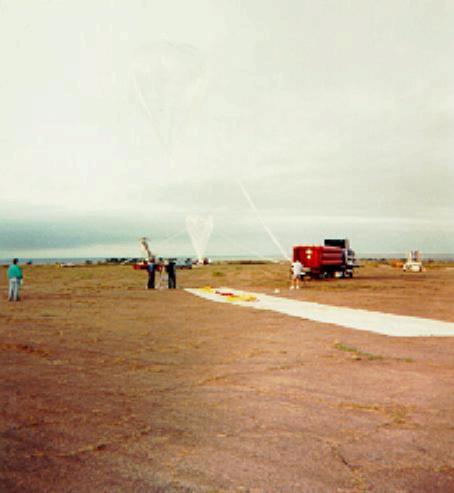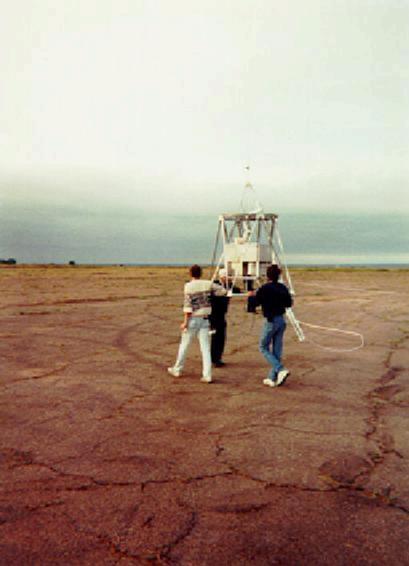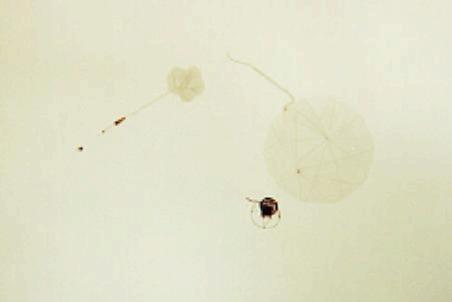
This is the NASA ballon base near Ft. Sumner, New Mexico where we launched our ballon in September of 1991. The base served as a training center for the old Army Air Corps in World War II, though most of the buildings are gone now. Yes, you really can see forever, and no, we didn't see any space aliens.

Here, the NASA staff are filling the balloon (with helium) that would take our ozone sampler package aloft. This makes about as much noise as a jet on takeoff. When fully expanded, the small tow balloon (being inflated in the foreground) had a volume of only a couple thousand cubic feet, but the volume of the larger flight balloon (already inflated in the distance) was 11.6 million cubic feet. For reference, the Goodyear blimp contains about 250,000 cubic feet of helium.

Here, John Morton (right side), a base hand (behind the package), and I (left side) are actually holding our 400 pound package DOWN as we maneuver it about the runway. The idea is to get the master balloon (connected to the NASA flight package) and the tow balloon (connected to our package) to go up in a straight line so there will be as little swaying as possible.

As you can see, it didn't work. Our tow balloon was overfilled, so it was actually racing the large balloon upwards. When they blew the tow balloon loose, our package fell a few feet, and the whole line from master balloon right down to our package swung as it shot skyward. The tow balloon is to the right in the picture, and appears to be the largest object in the photo. The flight balloon is actually considerably larger, and appears toward the top of the picture. In line with the flight balloon are the parachute and the NASA flight package, (a tiny speck to the lower left of the flight balloon) which is used for communications and measuring standard meteorological data. The dark blob in the center, near the tow balloon is our package, which is actually falling toward the taker of this picture (me).

This is how we found our flight package. Note how our crash protection was designed for, shall we say, a more vertical descent. While this might appear to be a rough landing, you should see what happens if they put the blasting caps between the flight package and the parachute (instead of between the flight balloon and the parachute): the parachute drifts softly to earth as the package plummets without benefit of a 'chute. Some of the base hands had seen it happen once; they recovered the remains with a shovel. The two guys in the picture are NASA hands (big strong guys who are rather adept at fast driving and lifting large heavy flight packages into cargo vans...we liked these guys a LOT). Not seen in the picture is the land owner telling us about the number and size of the snakes on his ranch ("many" and "large").